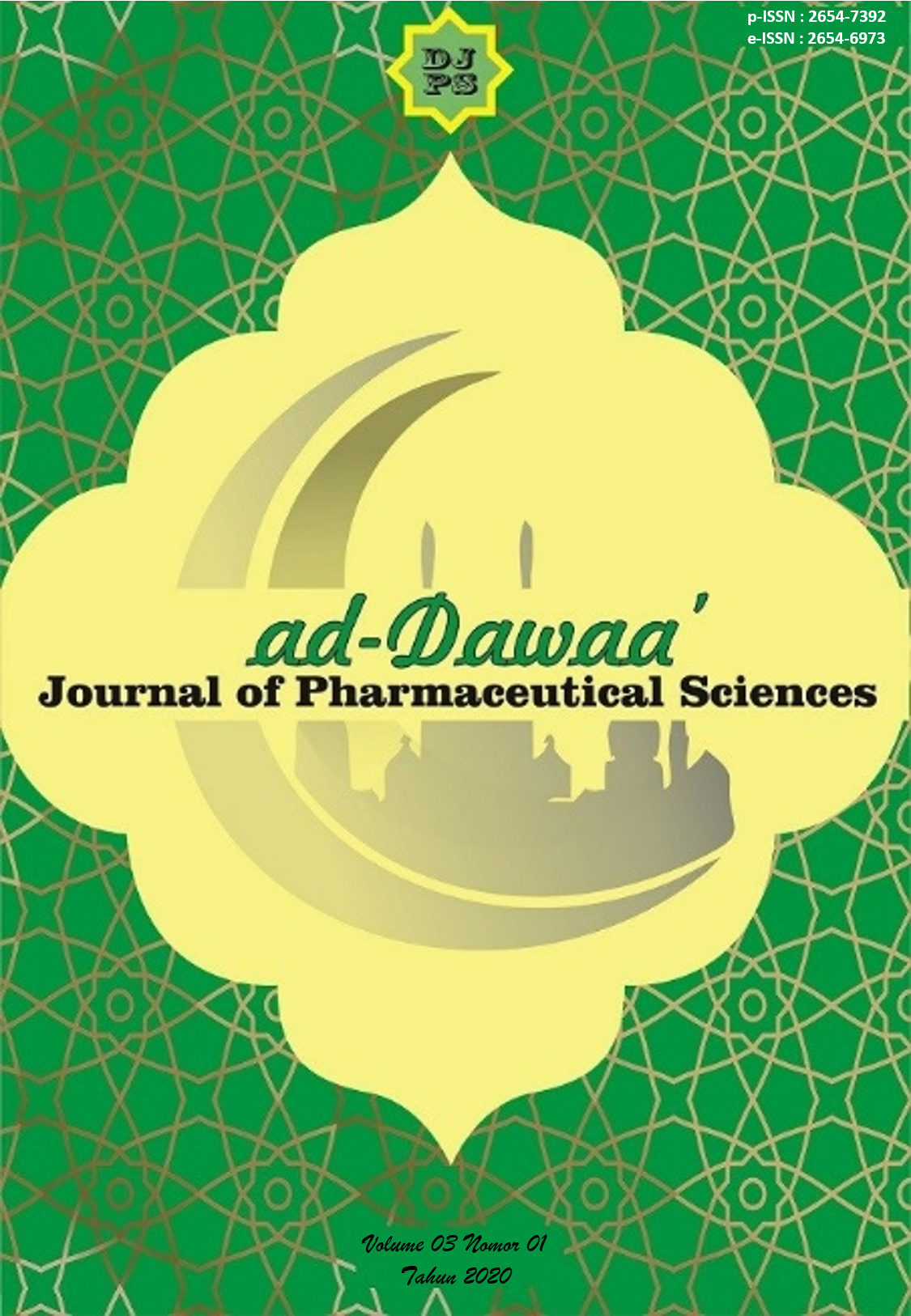Comparison of Thiamine Contain in Mung Beans (Vigna radiata L.) and Soybean (Glycine max (L.) Mer.) with Fresh and Boiled Treatment
Abstract
Mung beans (Vigna radiata L.) and soybeans (Glycine max (L.) Mer.) are species of nuts that contain good nutrients for health, such as thiamine or vitamin B1. Thiamine can increase appetite and important in nervous system. Both species of beans can be processed into consumable sprouts, both fresh and boiled. The research aims to compare the concentrations of thiamine in mung beans sprouts and soybeans sprouts in fresh and boiled conditions. The research procedure began with prepared fresh and boiled samples. Boiled samples were prepared by boiled sprouts for 3 minutes at 100°C. Thiamine was extracted from samples used 0,1 N HCl by heated on a water bath at 100°C for 30 minutes. The extracts of fresh and boiled sprouts were analyzed qualitatively used chemical reagents and quantitatively used spectrophotometer UV-Vis. Qualitative analysis showed that both fresh and boiled mung beans sprouts and soybeans sprouts contain thiamine. Quantitative test results for boiled and fresh mung beans sprouts were 0,26% and 0,15%, while soybeans were 0,64% and 0,44%, respectively. The thiamine content in soybeans sprouts is higher than in mung beans sprouts. Decrease of thiamine concentration in mung beans sprouts was higher at 42,31%, for boiled sample than soybeansbenas sprouts at 31,25%. The results of statistical tests used the t test showed a significant difference in thiamine concentration between fresh and boiled beans, both mung beans and soybeans.Downloads
References
Aminah, S., & Hersoelistyorini, W. (2012). Karakteristik Kimia Tepung Kecambah Serealia dan Kacang-kacangan Dengan Variasi Blanching. Seminar Hasil-Hasil Penelitian. LPPM Universitas Muhammadiyah Semarang.
Astawan, M. (2008). Khasiat Warna-warni Makanan. Jakarta: Gramedia.
Auterhoff, H., & Kovar, K.-A. (2002). Identifikasi Obat. Bandung: ITB.
Departemen Gizi dan Kesehatan Masyarakat FKM UI. (2014). Gizi Dan Kesehatan Masyarakat. Jakarta: Rajawali Press.
Kanetro, B., & Hastuti, S. (2006). Ragam Produk Olahan Kacang-kacangan. Yogyakarta: Universitas Wangsa Manggala Press.
Kusnandar, F. (2011). KImia Pangan Komponen Makro. Jakarta: PT Dian Rakyat.
Mayun Laksmiwati, A. A., Ratnayani, K., & Agustini, N. W. (2012). Kadar Thiamin Hidroklorida Pada nasi Beras Putih dan Beras Merah pada Berbagai Waktu Penyimpanan Pada Alat Magic-Com. Jurnal Kimia (Journal of Chemistry), 6(1), 47-54.
Mulyatiningsih, E. (2007). Teknik-teknik Dasar Memasak. Yogyakarta: UNY Press.
Mustakim. (2008). Budidaya Kacang Hijau Secara Intensif. Yogyakarta: Batu Press.
Safro, A. S. (1992). Protein, Vitamin, dan Bahan Pangan. Yogyakarta: UGM.
Sudarmaji, S., Haryono, B., & Suhardi. (1997). Prosedur Analisis Untuk Makanan dan Pertanian (IV ed.). Yogyakarta: Liberty.
Winarno, F. G. (2004). Kimia Pangan dan Gizi. Jakarta: PT Gramedia Pustaka Utama.
Once an article was published in the journal, the author(s) are:
- granted to the journal right licensed under Creative Commons License Attribution that allows others to share the work with an acknowledgement of the work's authorship.
- permitted to publish their work online in third parties as it can lead to wider dissemination of the work.
- continue to be the copyright owner and allow the journal to publish the article with the CC BY-SA license
- receiving a DOI (Digital Object Identifier) of the work.


1.png)